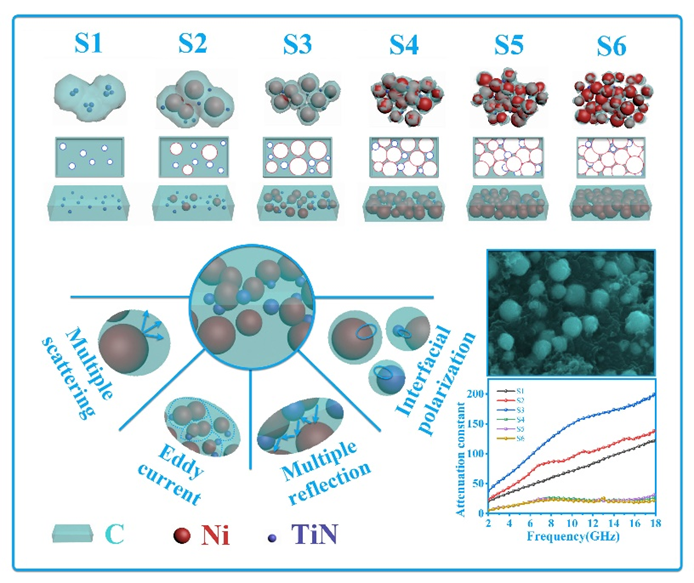The research work on heterogeneous interface regulation and wave absorption performance of titanium nitride/nickel/carbon ternary composite materials has been published on the journal of “Composites Part B” (IF= 6.864) by Professor Gong Chunhong who is from College of Chemistry and Chemical Engineering and Institute of Functional Polymer Composites.
The research group of Professor Gong has mainly engaged in the structural design, microstructure and electromagnetic properties of electromagnetic shielding and wave-absorbing materials for many years. The relevant research results have been published on Journal of Materials Chemistry, Composites Part B, Journal of Physical Chemistry C, Applied Physics Letters, Nanotechnology, Physical Chemistry Chemical Physics, Cellulose, et al.

Titanium nitride (TiN) as a new functional material, has a series of advantages such as high temperature resistance (Tm=2950℃), strong acid and alkali resistance, high conductivity, high strength, high hardness, etc., and is expected to be used as a new wave absorbing material in more demanding environments, especially high temperature absorbing materials. Taking comprehensive consideration of composition and structure design, the TiN/Ni/C ternary composites were established. On the one hand, the heterogeneous interface and the electromagnetic match between dielectric loss and magnetic loss was regulated, on the other hand, the extension of heterogeneous interface improved the interfacial polarization effect. Finally, the bandwidth and efficient absorption of the TiN composites were optimized. This study not only helps to clarify the internal electrical and magnetic mechanism of the interaction between absorbing materials and electromagnetic waves, but also provides a new idea for expanding the types of absorbing materials and designing electromagnetic wave absorbing materials with excellent comprehensive performance. Postdoctoral fellow of our college, Dr. Zhang Yahong, is the first author, and Professor Gong is the corresponding author. Henan University is the first signature unit.
This research was supported by the National Nature Science Foundation of China, China Postdoctoral Science Foundation, and Kaifeng Science and Technology Plan Project. Meanwhile, the work has received great support from Institute of Functional Polymer Composites, College of Chemistry and Chemical Engineering, and National & Local Joint Engineering Research Center for Applied Technology of Hybrid Nanomaterials, and Henan Engineering Research Center of Industrial Circulating Water Treatment.
URL:https://doi.org/10.1016/j.compositesb.2020.108028
DOI: 10.1016/j.compositesb.2020.108028


